
Rodeo is a competitive sport that arose out of the working practices of cattle herding in Spain, Mexico, and later Central America, South America, the United States, Canada, Australia, New Zealand, and the Philippines. It was based on the skills required of the working vaqueros in the charreria and later, cowboys, in what today is the western United States, western Canada, and northern Mexico. Today, it is a sporting event that involves horses and other livestock, designed to test the skill and speed of the cowboys and cowgirls. American style professional rodeos generally comprise the following events: tie-down roping, team roping, steer wrestling, saddle bronc riding, bareback bronc riding, bull riding and barrel racing. The events are divided into two basic categories: the rough stock events and the timed events. Depending on sanctioning organization and region, other events such as breakaway roping, goat tying, and pole bending may also be a part of some rodeos.

A cowboy is an animal herder who tends cattle on ranches in North America, traditionally on horseback, and often performs a multitude of other ranch-related tasks. The historic American cowboy of the late 19th century arose from the vaquero traditions of northern Mexico and became a figure of special significance and legend. A subtype, called a wrangler, specifically tends the horses used to work cattle. In addition to ranch work, some cowboys work for or participate in rodeos. Cowgirls, first defined as such in the late 19th century, had a less-well documented historical role, but in the modern world work at identical tasks and have obtained considerable respect for their achievements. Cattle handlers in many other parts of the world, particularly South America and Australia, perform work similar to the cowboy.

Bull riding is a rodeo sport that involves a rider getting on a bucking bull and attempting to stay mounted while the animal tries to buck off the rider.
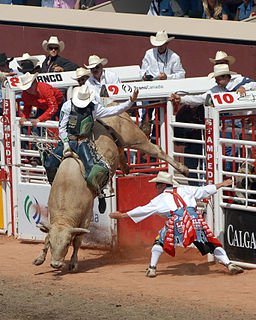
A rodeo clown, bullfighter or rodeo protection athlete, is a rodeo performer who works in bull riding competitions. Originally, the rodeo clown was a single job combining "bullfighting"—the protection of riders thrown from the bull, as well as being an individual who provided comic relief. Today in the United States, the job is split into two separate ones: bullfighters who protect the riders from the bull, and entertainers (barrelmen) who provides comic humor. However, in other parts of the world and at some small rodeos, the jobs of rodeo rider protection and comic remain combined.
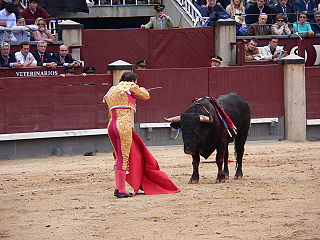
A bullfighter is a performer in the art of bullfighting. "Torero" or "toureiro" are the Spanish and Portuguese words for bullfighter and describe all the performers in the sport of bullfighting as practised in Spain, Portugal, Mexico, Peru, France, Colombia, Ecuador, Venezuela and other countries influenced by Portuguese and Spanish culture. The main performer and leader of the entourage in a bullfight, and who finally kills the bull, is addressed as maestro (master), or with the formal title matador de toros. The other bullfighters in the entourage are called subalternos and their suits are embroidered in silver as opposed to the matador's more-theatrical gold. They include the picadores, rejoneadores, and banderilleros.

A stunt performer, often referred to as a stuntman, stuntwoman or daredevil, is a trained professional who performs stunts, often as a career. Stunt performers usually appear in films or on television, as opposed to a daredevil, who performs for a live audience. When they take the place of another actor, they are known as stunt doubles.

Quail Dobbs was a famous rodeo clown and performer, inducted into the ProRodeo Hall of Fame in 2002.
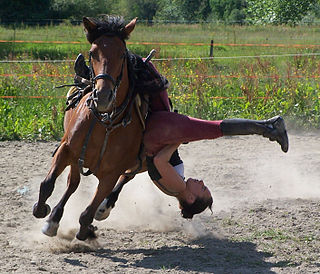
Trick riding refers to the act of performing stunts while riding a horse, such as the rider standing upright on the back of a galloping horse, using a specially designed saddle with a reinforced steel horn, and specialized kossak loops for hands and feet. The horse is likewise galloping free. Trick riding is NOT the same as equestrian vaulting which is an internationally recognized competitive sport, governed by the Federation Equestre Internationale (FEI).

The National Finals Rodeo, organized by the Professional Rodeo Cowboys Association (PRCA), is the premier championship rodeo event in the United States. The NFR showcases the talents of the PRCA's top 15 money-winners in each event as they compete for the world title.
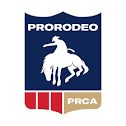
The Professional Rodeo Cowboys Association (PRCA) is the largest rodeo organization in the world. It sanctions events in the United States, Canada, Mexico and Brazil, with members from said countries, as well as others. Its championship event is the National Finals Rodeo. The PRCA is headquartered in Colorado Springs, Colorado, United States.
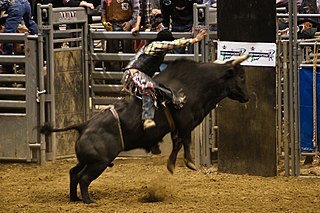
The ProRodeo Hall of Fame and Museum of the American Cowboy was opened in August 1979 as a museum designed to "preserve the legacy of the cowboy contests, the heritage and culture of those original competitions, and the champions of the past, present and future." It is located in Colorado Springs, Colorado, and only inducts Professional Rodeo Cowboys Association and Women's Professional Rodeo Association members. It is the "only museum in the world devoted exclusively to the sport of professional rodeo."
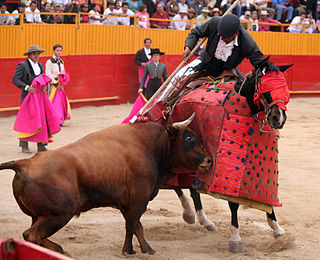
A picador is one of the pair of horsemen in a Spanish bullfight that jab the bull with a lance. They perform in the tercio de varas, which is the first of the three stages in a Spanish bullfight.

Wild West shows were traveling vaudeville performances in the United States and Europe that existed around 1870–1920. The shows began as theatrical stage productions and evolved into open-air shows that depicted romanticized stereotypes of cowboys, Plains Indians, army scouts, outlaws, and wild animals that existed in the American West. While some of the storylines and characters were based on true events, others were fictional or sensationalized. Native Americans in particular were portrayed in a sensationalistic and exploitative manner. The shows introduced many western performers and personalities, and romanticized the American frontier, to a wide audience.
Jaime Bravo was a Mexican matador during the 1950s and 1960s. Bravo was known for his death-defying style and numerous relationships with various women and Hollywood starlets.
When Good Pets Go Bad is an American reality television series of specials about animals behaving in dangerous and often unpredictable ways. It aired on Spike.
Jimmy D. "Jungle" Anderson was an American rodeo bullfighter.

Bullfighting is a physical contest that involves humans and animals attempting to publicly subdue, immobilise, or kill a bull, usually according to a set of rules, guidelines, or cultural expectations. There are many different forms and varieties in various locations around the world. Some forms involve dancing around or over a cow or bull, or attempting to grasp an object from the animal.
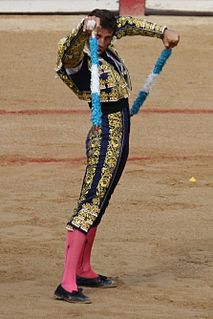
Juan José Padilla is a Spanish torero ('bullfighter'). He became a matador de toros, 'killer of (full-grown) bulls', in the town of his birth, Jerez de la Frontera, on June 18, 1994 when he was 21 years old. He was known as the 'Cyclone of Jerez' and featured heavily, both personally and professionally, in Into The Arena: The World Of The Spanish Bullfight, a shortlisted nominee for the William Hill Sports Book of the Year in 2011.
Jeremy Sparks is an American, a retired Professional Rodeo Cowboy Association member, Cheyenne Frontier Days Rodeo Hall of Fame Bullfighter, and author of Go West - 10 Principles that Guided My Cowboy Journey.

The Bull Riding Hall of Fame, located at the Cowtown Coliseum in the Fort Worth Stockyards in Fort Worth, Texas, is a hall of fame for the sport of bull riding. It is incorporated as a non-profit organization in the State of Texas, and created to "recognize, memorialize, and applaud the bull riders, bullfighters, bulls, stock contractors, events, and individuals who have had a made a historic contribution and attained stellar performance in the sport." Membership is open to fans worldwide.















